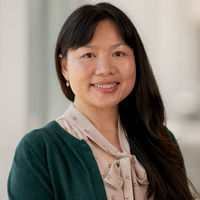Subject to change.

Subject to change.

Dr. Yao Nie holds a Ph.D. in Electrical Engineering and serves as Director in Roche Diagnostic Solutions, Computational Science and Informatics Pathology Lab Solution chapter. Since joining Roche in 2013, she has led multiple teams developing AI-driven image analysis technologies for diverse Digital Pathology applications, including bright and dark field imaging, primary and advanced staining using simplex and multiplex assays, in collaboration with Roche Pharma and multiple academic partners.